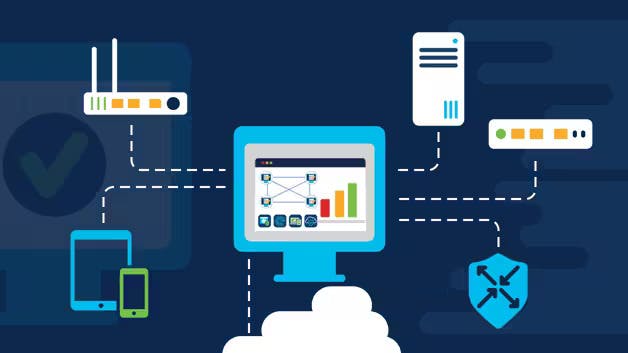




“Enterprise network” denotes the IT infrastructure that midsize and large organizations use to provide connectivity among users, devices, and applications. The goal is to support the organizations’ objectives by consistently delivering connected digital services reliably and securely to workers, partners, customers, and, increasingly, also things.
A well-designed enterprise network provides the proper connectivity for all users, things, devices, and applications present in an organization, as appropriate for the role, purpose, and location of each.
An enterprise network can help improve the user experience through proactive network optimization, faster issue resolution, proper prioritization of essential traffic, and helping to ensure security and privacy.
An enterprise network can be designed to support digital initiatives needed to quickly adapt to rapidly evolving needs, including expansion, scaling, growth, and introduction of new services.
Network management tools such as network controllers give administrators the ability to set access rules and permissions for users and departments, add new users or functions easily, and monitor performance and take corrective action, all from a central interface.
In addition to security applications and devices, such as firewalls and secure Internet gateways, an enterprise network becomes a primary detector of threats and an enforcer of security and compliance. It does so with device identification, profiling, and verification, network monitoring, authentication, access controls, segmentation, and device and account management.
Enterprise networks that use subscription-based licensing get continuous access to the latest networking and security innovations. They are better able to keep pace with their expanding demands as technologies and requirements change.
As more and more data and applications are developed, deployed, and delivered across multiple public clouds, enterprise networks provide seamless connectivity between users and cloud applications. They also optimize workloads between on-premises locations and public clouds.
Wi-Fi 6, 5G, and newly opened frequency bands for ultra-fast, short-range transmissions are enabling access to high-speed wireless connectivity for more users and IoT devices in more settings. At the same time, 400 Gbps is the new standard for high-speed data center networks. These innovations are spurring productivity enhancements and continued innovation across organizations.
Increasingly, network management is being automated, with software that can recognize connected devices, profile them, and determine whether they can be trusted. They can detect performance problems or potential threats and respond automatically. Artificial intelligence (AI), machine learning (ML), and machine reasoning (MR) are now making networks smarter by adapting to the unique needs of each organization and customizing recommendations.
More and more enterprises are aligning their networks to intent-based networking (IBN) principles. Intent-based networks use advanced analytics along with software-defined networking (SDN)-based automation to continuously align network performance to changing business needs. They capture business intent, translate it into policies that can be applied consistently across the network, and continuously monitor and adjust network performance to help achieve desired business outcomes.
Widespread mobility and cloud adoption require an enhanced approach to protecting users, applications, and data. A zero-trust security framework helps to prevent unauthorized access, contain breaches, and reduce the risk of an attacker’s lateral movement through the network.
Managed IT Services
Managed Security Services